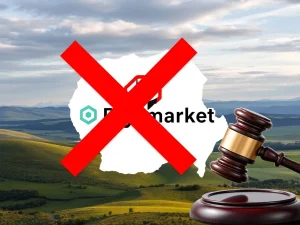Unveiling Altcoin Unit Bias: Samson Mow’s Shocking Truth for Crypto Newbies

Are you new to the exciting world of cryptocurrency and scratching your head over why some digital coins seem incredibly cheap while others cost a fortune? You’re not alone! Many newcomers to the crypto space fall prey to a sneaky psychological trick known as altcoin unit bias. Bitcoin maximalist and Jan3 CEO, Samson Mow, is sounding the alarm, claiming this bias is ‘absolutely destroying’ crypto newbies by distorting their perception of value in the market. Let’s dive deep into Mow’s perspective and understand how this unit bias could be impacting your investment decisions.
Decoding Altcoin Unit Bias: Why Cheaper Isn’t Always Better
What exactly is this ‘unit bias’ that Mow is so concerned about? In simple terms, altcoin unit bias is the tendency for people to perceive assets with a lower unit price as being more affordable or a better deal, regardless of their total market capitalization or supply. Think of it like this: would you rather own one whole share of a stock priced at $1 or a fraction of a share of another stock priced at $100? For many, owning a ‘whole unit’ feels more satisfying, even if the fractional share might represent a larger overall value.
In the crypto world, this translates to investors often favoring altcoins – cryptocurrencies other than Bitcoin – simply because they have a lower price per coin. For example, you might be able to buy thousands of units of an altcoin for the same price as a fraction of Bitcoin. This can create a false sense of ‘getting more for your money’.
Samson Mow’s Stark Warning: Exposing Overvalued Altcoins
Samson Mow doesn’t mince words. He believes that altcoin unit bias is blinding inexperienced investors to the true value proposition – or lack thereof – of many altcoins. His argument is straightforward: when you strip away the unit price illusion and compare altcoins to Bitcoin on a level playing field, the picture changes dramatically.
Mow’s core point revolves around the limited supply of Bitcoin – just 21 million coins will ever exist. He asks a thought-provoking question: what if we calculated the price of altcoins as if they were also limited to a supply of 21 million? Let’s look at the hypothetical scenario he presents:
| Cryptocurrency | Hypothetical Price (if 1/21 million supply) | Price at Time of Article | Percentage Increase |
|---|---|---|---|
| Ether (ETH) | $9,200 | ~$2.4 | ~278,746% |
| XRP (XRP) | $5,800 | ~$1 | ~470% |
| Solana (SOL) | $3,400 | ~$140 | ~2,328% |
(Note: Prices are approximate and based on the article’s publication time. Current prices may vary.)
As you can see, when we equalize the supply constraint and calculate the equivalent price per 1/21 millionth of the total supply, the hypothetical valuations of these altcoins skyrocket. Mow’s conclusion is blunt: “No way these alts are worth that much.” His calculation aims to highlight that the perceived low unit price of altcoins can be deceptive and doesn’t necessarily reflect their intrinsic value compared to Bitcoin’s scarcity.
Bitcoin Dominance: A Key Indicator in the Crypto Market
Mow’s analysis of altcoin valuation and unit bias ties directly into the concept of Bitcoin dominance. Bitcoin dominance is a metric that measures Bitcoin’s market capitalization as a percentage of the total cryptocurrency market cap. It’s a useful indicator for understanding the overall sentiment and flow of capital within the crypto market.
Historically, a high Bitcoin dominance suggests that investors are primarily focused on Bitcoin, often seen as the safest and most established cryptocurrency. Conversely, when Bitcoin dominance declines, it can signal the start of an ‘altcoin season,’ where investors move capital from Bitcoin into altcoins seeking potentially higher, albeit riskier, returns.
According to the article, Bitcoin dominance was around 63.66% at the time of publication and had increased by over 9% in the previous six months. Many analysts had predicted Bitcoin dominance to peak around 60% in late 2024, anticipating an altcoin season to follow. However, Mow’s perspective suggests that Bitcoin dominance might go even higher, driven by a growing realization of the overvaluation of altcoins when unit bias is removed from the equation.
Crypto Newbies Beware: Navigating the Unit Bias Trap
For crypto newbies, understanding unit bias is crucial to making informed investment decisions. Here are some key takeaways to help you navigate the crypto market more effectively:
- Look Beyond the Unit Price: Don’t be solely swayed by the low price of an altcoin. Consider the total supply, market capitalization, and the project’s fundamentals.
- Compare Apples to Apples: When evaluating different cryptocurrencies, try to compare them based on metrics beyond just the unit price. Market cap, technology, use cases, and team credibility are all important factors.
- Understand Bitcoin’s Scarcity: Bitcoin’s limited supply is a fundamental aspect of its value proposition. Recognize that this scarcity is not always mirrored in altcoins.
- Do Your Own Research (DYOR): Never invest based solely on hype or perceived low prices. Thoroughly research any cryptocurrency before investing.
- Consider Bitcoin Dominance: Keep an eye on Bitcoin dominance as a broader market indicator, but don’t rely on it as the sole predictor of altcoin season or market trends.
The Bottom Line: Unit Bias is a Powerful Illusion
Samson Mow’s critique of altcoin unit bias serves as a potent reminder to investors, especially those new to the crypto space, to look beyond superficial price tags. While the allure of owning thousands of units of a cheap altcoin can be strong, it’s essential to understand the underlying dynamics of supply, demand, and true value. By removing the distorting lens of unit bias and focusing on fundamental analysis, crypto investors can make more rational and potentially more profitable decisions in this volatile and exciting market. Don’t let unit bias destroy your investment strategy – educate yourself and invest wisely!










